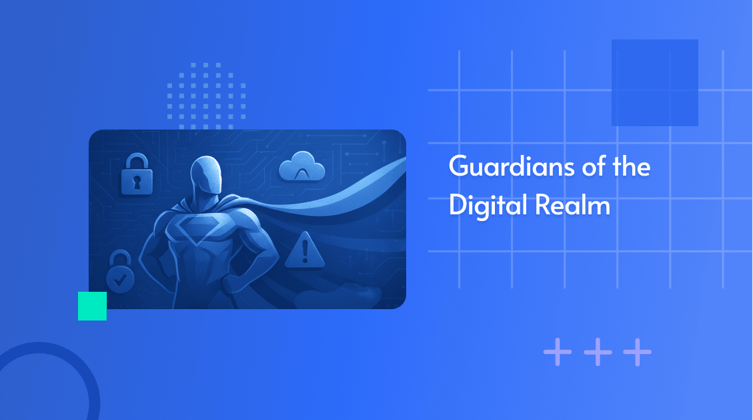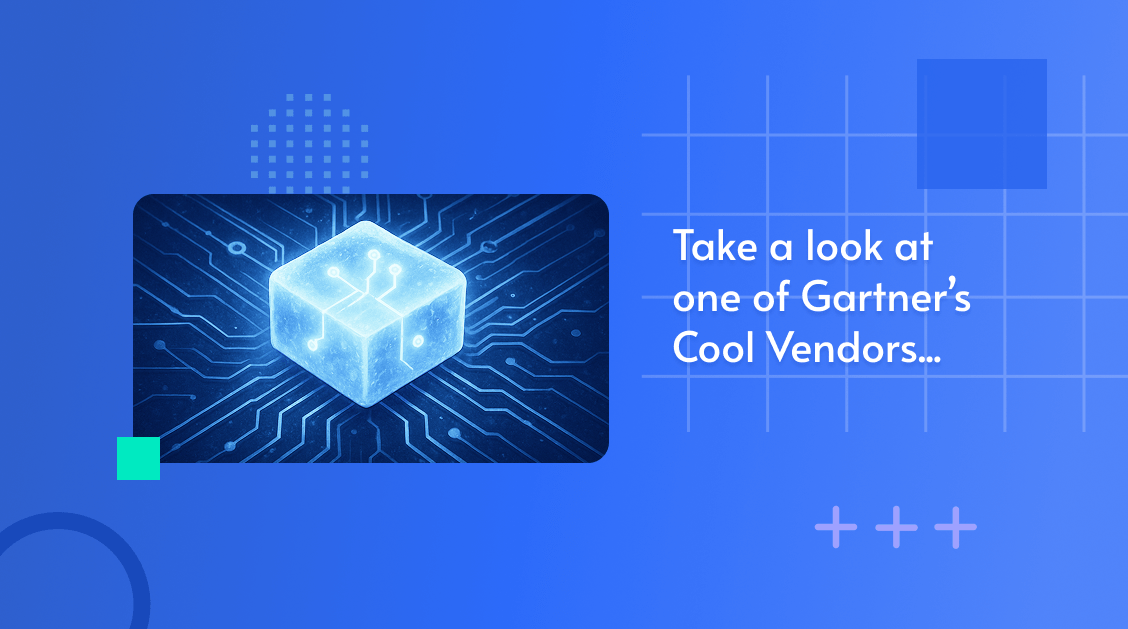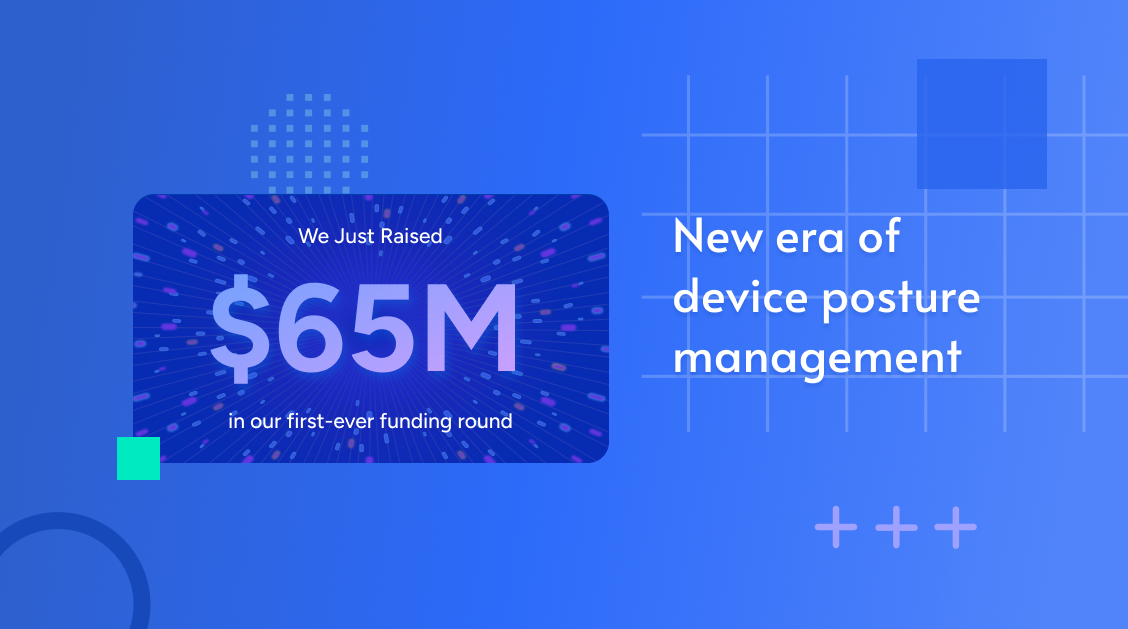We may have known it for a while, but now we are officially cool! Remedio was ju...
Pinning Down An Evolving Role: The Definitive CISO Job Description

When it comes to IT security, risk mitigation, incident response, and cyber crisis management, the buck stops with the Chief Information Security Officer (CISO). As the enterprise’s top cyber strategist, CISOs must navigate both macro-level threats and intricate technical details to safeguard organizational resilience and operational productivity.
With a mandate that spans both immediate threats and longer term risks, the CISOs day is not only devoted to closing security gaps, but managing tech and talent, and steering stack strategy to align with business goals.
In the space of this article, we'll unpack the key responsibilities and qualifications that define the role of the CISO. Consider this the definitive CISO job description!
From Gatekeeper to Strategic Enabler: The Expanding Influence of the CISO
Over the last several years, the role of the CISO has undergone a dramatic transformation. No longer seen merely as the custodian of firewalls and compliance checklists, the modern CISO is called upon to lead at the intersection of technology, risk, and business strategy.
But the odds are still stacked against them.
Security leaders often find themselves in the unenviable position of proving a negative — that their efforts are working because nothing bad is happening. Unfortunately, in a boardroom driven by measurable outcomes and ROI projections, the absence of disaster is rarely seen as a success story.
This reality creates a fundamental communication gap. CISOs often present dashboards full of technical detail — patch levels, vulnerabilities, alerts suppressed — only to be met with furrowed brows and requests for simplification.
To gain ground in the boardroom, CISOs have had to pivot from reporting on technology to articulating business impact. This means framing risks in terms of financial exposure, legal liability, regulatory gaps, and brand reputation.
The mandate is evolving: it's no longer just about preventing bad outcomes. It’s about enabling better ones. And that's not only changed the CISO mindset, but the job itself.
Seeing & Selling the Business Side of Security
Security, done right, introduces rigor and visibility across the enterprise. It forces clarity on asset inventory and interdependencies, elevates standards for access control, and creates structured processes for remediation. These improvements ripple outward. By minimizing friction between systems, reducing shadow IT, and enforcing consistent configurations, CISOs help streamline operations, reduce downtime, and foster cross-functional accountability.
Security teams that automate patching, misconfiguration detection, or access reviews don’t just improve their own efficiencies — they free up resources to focus on innovation instead of firefighting. And when prioritization is based on risk — not ticket queues — remediation efforts are more aligned with business outcomes.
The most impactful CISOs are reframing security as a lever of risk-informed decision-making. They're helping leadership answer critical questions like:
-
What’s the downstream impact if our ERP system is disrupted for 72 hours?
-
How would an insider breach in Finance affect M&A due diligence?
-
What’s the cost of inaction if we delay implementing MFA for all admins?
These aren’t security questions. They’re business questions — and when CISOs lead the discussion, they elevate their role from IT steward to strategic partner.
While some impacts remain intangible — reduced anxiety, peace of mind, improved trust — others are becoming increasingly quantifiable. Lower cyber insurance premiums, faster audit cycles, less downtime, and reduced regulatory penalties are all financial wins tied directly to mature security practices.
Even more compelling is the competitive edge: enterprises with strong cybersecurity postures move faster. They can enter new markets, onboard partners, and launch digital services with greater confidence and fewer delays. They can also expand and update their infrastructure with greater precision, efficiency, and success.
In this way, security isn’t a drag on innovation — it’s a prerequisite for it.
The modern CISO isn’t just protecting data; they’re protecting momentum. They’re not just managing infrastructure; they’re managing risk, resilience, and reputation.
As the cyber mandate continues to expand, success will belong to the security leaders who can speak the language of business, illuminate the value of prevention, and position cybersecurity as a force multiplier — not a cost center.
CISO: Key Responsibilities, Experiences, and Skills
In Search of an Exemplary CISO |
|
We are seeking a visionary and pragmatic Chief Information Security Officer (CISO) to lead our enterprise security strategy and champion a proactive security culture. The ideal candidate will bring deep technical expertise, executive presence, and a proven ability to align cybersecurity initiatives with broader business objectives. As a senior executive reporting to the CEO, the CISO will shape risk-informed policies, integrate security into digital transformation efforts, and act as a trusted advisor to the board on organizational resilience. This is a strategic role that requires both hands-on leadership and the ability to influence across departments. He or she should push innovation while protecting organizational assets in a dynamic environment. This position is expected to lead digital transformation efforts and simultaneously foster a proactive security culture throughout the organization. |
Key responsibilities: |
|
Qualifications: |
|
Fitting In Within the Organization
While the reporting structure varies depending on an organization’s size, industry, regulatory environment, and risk profile, the importance of cybersecurity has evolved the CISO into a leader with broad influence.
Recent data reveals that 40% of CISOs report directly to the Chief Executive Officer (CEO), and 27% bypass the CEO altogether to report directly to the board of directors. Only 24% of CISOs report to a Chief Information Officer (CIO),1 which is increasingly seen as suboptimal due to potential conflicts of interest and the fact that the CISO’s responsibilities extend well beyond the traditional IT domain.
This shift reflects not only the elevated status of the role but also the critical need for CISOs to communicate cybersecurity risks in clear, business terms. Accordingly, the CISO’s influence also depends on their seat at the table. Are they participating in executive meetings, shaping budgets, and briefing the board? Are they building up organizational silos or breaking them down?
It's only natural for silos to emerge, especially across IT, SecOps, and Infrastructure, and especially when those departments operate with traditionally narrow purviews and management styles. That leads to fragmentation and knowledge gaps both in terms of teams and environments.
And those silos can be costly, slowing response times, hiding threats, negotiating resources, and creating perverse incentives. Thankfully things are changing with the modern CISO at the helm. These leaders are now expected to bring everyone together at the same table, working towards the same goals, and operating with a shared frame of reference.
And then there's compliance side of things, adding another layer of stress. Compliance encompasses not only externally enforced regulatory standards like HIPAA or DORA, but also internally imposed frameworks like CIS or NIST. Complying with those strictures is no trifling thing, particularly as the guidance may be vague and the path between control and action (or benchmark) is not always clear.
For most organizations, compliance therefore demands continuous review and scrutiny, not a once yearly audit. Constant readiness is the aim, requiring real-time validation and clear reporting.
Though not the CISOs' chief concern, compliance increasingly falls within their orbit. Here too, they must orchestrate between different departments and stakeholders, making sure things run smoothly, serving as the last line of defense, and communicating accomplishments upwards.
Measuring What Matters: How to Gauge CISO Success
Evaluating the effectiveness of a CISO requires looking at how well cybersecurity efforts support organizational resilience, regulatory alignment, and operational efficiency. While metrics vary by industry and maturity, several common benchmarks help access a CISO’s impact:
-
Mean Time to Detect (MTTD) and Mean Time to Respond (MTTR): These are core operational metrics that indicate how quickly an organization can identify and contain security threats. Shorter times generally signal a mature incident detection and response program, often driven by effective tooling, team readiness, and leadership.
-
Vulnerability Management: The ability to patch critical vulnerabilities within defined SLAs (e.g., CVSS 9+ patched within 15 days) speaks volumes about the efficiency of security and IT collaboration. A high percentage of remediated vulnerabilities within target windows indicates: strong internal processes, accurate asset and dependency visibility, and smart prioritization.
-
Configuration Posture: Policy definition and effective application makes for a strong hygiene that protects against all eventualities. A reduction in outright misconfigurations or just high-risk configurations reflects a proactive, well-governed approach to configuration management. It also shows the CISO's ability to drive visibility and control across sprawling IT environments.
-
Drift Prevention: When policies are not dynamically applied and field states are not continuously assessed in the face of security designs, they're liable to change as a result of user behavior, software updates, rogue devices, and broken architecture. These quiet areas of exposure undermine even the most mature environments.
-
Uptime/Downtime: While a broader IT operations concern, as a metric uptime is increasingly shared with cybersecurity — underscoring the CISO’s role in preserving trust, customer experience, and revenue continuity. A mature security program support uptime by preventing outages caused by misconfigurations or unauthorized changes, ensuring rapid incident isolation and remediation, and increasing fault tolerance and failover readiness in critical infrastructure.
-
Audit Readiness: Staying continuously audit-ready — not just scrambling before an assessment — is a hallmark of a strong security posture. Compliance exposure High compliance scores indicate that policies, controls, and technical safeguards are consistently maintained and aligned with regulatory requirements.
-
Tooling ROI and Utilization Metrics: Many security programs suffer from “tool sprawl,” where expensive platforms are underutilized or poorly integrated. CISOs should track: actual usage of licensed security platforms, overlap between tools & redundant functionality, and reduction in manual workloads due to orchestration/automation.
-
Business-Integrated Risk Reporting: The maturity of business-aligned risk metrics — downtime costs, customer impact, regulatory exposure, estimated financial risk of top threats, quantified reduction in the attack surface, risk heatmaps tailored to business units or assets — demonstrates the CISO’s ability to bridge security operations with strategic planning.
These measurements offer a snapshot of not only how secure an organization is, but how well cybersecurity is integrated into the broader business strategy.
The Continuity Caveat: Preventing Disruption In All Its Forms
CISO tenure tends to be relatively short, perhaps a reflection of the intense demands and high stakes of the role. On average, the position is filled for around 2–4 years. Unsurprisingly, the distribution of that time varies based on the size of the organization. Within Fortune 500s and large enterprises, the average tenure clocks in at around 4.5 years. For smaller companies, however, CISOs are given a shorter leash, only some 23 months.
However, that turnover doesn’t just affect individual careers. It creates real risks for the business. When a CISO departs without strong documentation or handover processes, institutional knowledge can be lost. Decisions about risk tolerance, architecture, projects planned, and control logic often reside in the departing leader’s head, leaving gaps for successors, auditors, and teams trying to maintain continuity.
Frequent leadership changes can slow or derail security initiatives. Building a mature, resilient cybersecurity program takes time, and each new CISO may reprioritize projects or restructure the team. The result is often fragmentation and inconsistency, especially in how security communicates with the board, regulators, and cross-functional teams.
To mitigate these risks, organizations must plan for continuity. Critical decisions, roadmaps, and policies should be thoroughly documented and easy to access. Oversight tools that provide real-time visibility into posture, risk, and configuration allow incoming leaders to quickly assess the environment and continue forward momentum without rebuilding from scratch.
While turnover is sometimes inevitable, disruption doesn’t have to be. With the right tools, governance, and mindset, organizations can ensure that cybersecurity leadership remains strong and strategic, even as individual leaders change.
From Firefighting to Fire-Proofing: Empowering CISOs
As cyber threats grow more sophisticated and the business landscape more complex, the CISO’s role has evolved from defender to enabler — safeguarding not just systems, but the continuity, trust, and innovation that drive the business forward. As the role becomes more critical and complex, it’s in everyone’s best interest for organizations not only to understand what CISOs do, but to actively support their success.
Remedio empowers CISOs to go beyond visibility by delivering precision, speed, and immediate control. Its platform offers deep misconfiguration detection across endpoints, along with policy validation to ensure systems stay aligned with internal standards and external regulations. With built-in risk visibility and push-button remediation, teams can fix issues instantly, without complex manual workflows.
By eliminating configuration drift, minimizing unnecessary exposure, and surfacing actionable insights, Remedio becomes a force multiplier, offering CISOs the clarity, confidence, and control to lead strategically, not just react.
Continuous compliance becomes attainable and security teams are freed from repetitive firefighting so they can focus on what matters most: cyber maturity, incident readiness, and innovation enablement.
The road ahead won’t get easier: more complexity, more pressure, more unknowns. But with the right tools, CISOs don’t just keep pace; they can also lead the charge.
Remedio equips them to act decisively, guide securely, and shape strategy with confidence. Because the future of security leadership belongs to those bold enough to reimagine it — the cyber heroes on a mission to build what’s next.
_____
-
Although there is overlap between the two, CISOs focus on managing cybersecurity risks and protecting the organization’s digital assets, whereas CIOs oversee the broader IT strategy and technology operations that support overall business goals.
About Author

Tal Kollender
Subscribe to
our Newsletter
We are ready to help you until and unless you find the right ladder to success.
Related Posts
Join over 25,000 in beating the failure of strategies by following our blog.
Six years ago, we set out with a simple but ambitious mission: to make enterpris...
3 minute read
If a threat falls in the SOC and no one ties it to revenue, does it really make ...
7 minute read
Active Directory (AD) is the powerhouse of the enterprise — the central hub wher...

.png?width=1584&height=396&name=ciso-job-description-heroes-on-a-mission%20(2).png)








Comments